雷射模組工程
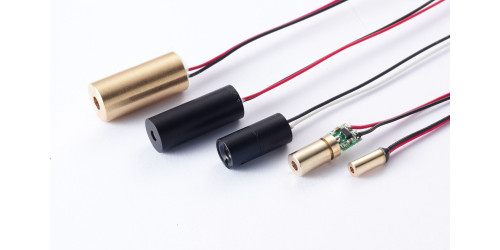
Laser Modules List: Diode Laser module, Infrared laser module, IR laser module, Laser line module, Laser line generator, Cross line laser module
Laser Modules Guideline introduces IADIY's laser module product line including RGB diode laser module, infrared laser module, line laser module, and customized diode laser module for convenient search and comparison by laser modules features list. You can open the laser modules guideline accordion to review the laser modules list and related laser diode module introduction and explanation.
More diode laser modules with different wavelengths and power options are available additionally to the standard laser diode module types. We also support the custom made laser modules as your requirements. Please send your requirements to us or leave the message in comment below. We'll reply to you soon!
Welcome to visit our laser modules online store: https://www.iadiy.com/laser-module

IADIY provides standard laser modules that are convenient for quick and easy orders of samples or small quantities on our Online-store.
We also provide and welcome orders of custom made laser modules with any specification requirement. If you can not find the laser module that fits your application, please email your inquiries to sales@iadiy.com and briefly describe your requirements or applications to us. We will reply to you in a very short time (usually within two working days).
Laser Module Introduction
There are 2 major kinds of laser modules on the market: laser diode modules and DPSS modules.
What we call what we call "Diode Laser Module” or "Laser Diode Module” is a device comprising a laser diode that can be connected to a power source directly.
A "Laser Diode Module" usually comprises a laser diode, a driver circuit board, an optical lens (a laser collimator lens, a laser line generator or a laser pattern generating DOE (Diffractive Optical Element)) and mechanical parts. In high power laser modules, an additional TEC is also included for heat dissipation. The laser light emitting from the laser diode has a wide divergent span angle, therefore most applications require a laser collimator lens that will converge the laser light into a collimated laser beam. In the event of applications that would require a non collimated laser beam, IADIY also designs other complementary optical components to be assembled after the collimated laser beam, in order to achieve the desired pattern.
Another advantage of full laser diodes modules compared to single laser diodes is the presence of a specific driving circuit for the laser diode. Laser diodes are easily damaged components that need suitable working voltage and current supply in order to reach a stable output power, especially when considering the eye safety certifications.
The other main kind of laser module uses DPSS (Diode-pumped solid state laser) technology. This DPSS laser modules are mostly applied in high power applications or designed for specific wavelengths.
Laser Diode Module Structure
- a laser diode
- an optical lens
- a laser driver circuit
- optical and mechanical properties
Common DPSS Laser Modules
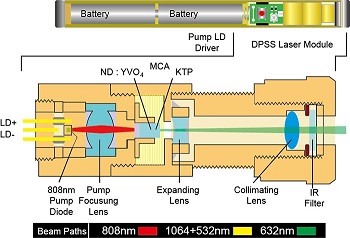 Electromagnetic radiations with wavelengths in the range of 400nm to 700nm are perceived by human eye as visible light. Lasers usually show a very narrow wavelength spectrum. A laser diode emits only at a determined wavelength emitted, depending on the semi-conductor material it is made out of. DPSS laser modules use crystals to modify a laser diode wavelength into a different wavelength.
Electromagnetic radiations with wavelengths in the range of 400nm to 700nm are perceived by human eye as visible light. Lasers usually show a very narrow wavelength spectrum. A laser diode emits only at a determined wavelength emitted, depending on the semi-conductor material it is made out of. DPSS laser modules use crystals to modify a laser diode wavelength into a different wavelength.
The most common solid state laser in use is the 532 nm DPSS green laser module. A 808 nm wavelength infrared laser diode injects light into a neodymium-doped crystal which then outputs a 1064 nm wavelength light, thanks to the properties of neodymium ions. This light frequency is then doubled by using a nonlinear optical process when going through a KTP crystal, thereby producing 532 nm light (When a frequency doubles, the corresponding wavelength is halved). Green DPSS lasers usually show ~20% efficiency (although some lasers can reach up to 35% efficiency). For example: a green DPSS laser module using a 2.5 W laser diode would output around 500 to 900mW of 532 nm light.
Blue DPSS Lasers use a similar process, except that the 808 nm light is converted by the neodymium crystal into 946 nm light (by selecting other properties of the neodymium), which is then frequency-doubled to 473 nm by another crystal (beta barium borate or lithium triborate crystal). These last materials show lower gains, hence DPSS blue lasers are only around 3-5% efficient, and the overall output power will be lower.
Yellow DPSS Lasers use an even more complicated process. An 808 nm diode generates 1,064 nm and 1,342 nm light, which are then combined together to become 593.5nm. The yellow DPSS lasers show even lower efficiency due to their complexity (around 1% efficiency), and are also more expensive. Another method to achieve yellow laser light is to combine 1,064 and 1,319 nm light, which are then summed to 589 nm. This process is more efficient: about 3%.
1. Laser diode:
-Main characteristics of laser diode: wavelength, output power, operating temperature
(Our laser diodes product list at https://www.iadiy.com/custom-laser-module, and other characteristics of laser diode like divergent angle, mode,and detsils please refer to the laser diode introduction. We can provide diode laser modules with wavelengths comprising 405nm, 450nm blue laser module, 520nm green laser module, 635nm, 650nm red laser module up to 1550nm infrared laser module and a laser module driving power can be equal or smaller than its laser diode operating power (as stated on the corresponding laser diode data-sheet).

2. Optical Lens: Collimating Lens + Other Function Lens (Laser Line Generator, Laser Pattern Generator, or Special Feature Function Optical Components)
The following are the basic optical specifications that we need to agree upon before starting any laser module production.
- Main characteristics for the beam collimation: divergence angle, laser spot size.
- Choice of the laser pattern: laser dot, laser line, laser cross line, or any kind of laser pattern achieved through using DOE (Diffractive Optical Elements).
Laser Collimating Lens, Laser Collimator Lens for Laser Collimation Beam
Usually the emitting laser light from the laser diode is divergent, and most applications need the laser beam as a straight light beam. Then it needs the collimating lens to focus the divergent laser light to a very small divergent angle we called laser collimation. The laser beam divergent angle, beam spot size, even laser line width or DOE laser pattern sharpness depend on the laser collimation performance. The collimating lens is the key for the collimated beam requirements. The collimating lenses selection you can refer to the Optical Lenses Store.
Laser Line Module / Laser Line Generator / Cross Line Laser Module properties:
The laser line module projects a span angle laser line pattern. The length of laser line depends on the span angle and the distance, longer as farther distance and bigger span angle. The standard span angle of IADIY line laser modules have 40°, 60°, 90°, 110° can be chosen. The standard line laser module series we only accept the different span angle customized no other special modifications. As the real applications most customers have the requirements for the laser line width, laser line central accuracy, laser line straight accuracy and the laser line power uniformity. Higher accuracy would cause much time for the line laser module alignment. Especial the requirement of laser power uniformity would consider using the different level laser line generator lens. If you have these requirements please take the reference of our high end line laser modules product line. And send your application and detail requirements to us. We’ll try to optimize your requirements to modify the line laser module as the most cost efficiency for your application.
-Main characteristics of line laser module: line laser span angle or the length, and laser line width, laser line straight (bend) accuracy at working distance, laser line power uniformity range, boresight requirements: central, tilt, rotation requirements.


For the IR laser line module IADIY specially designed the laser line generator DOE for the infrared detection application like robot, gesture, and motion detection. It has the better power uniformity and high quality features for production. The IADIY economic scale of laser modules can provide you the best cost efficiency IR line laser module.

※ For line lasers, specifications such as laser line width, laser line span angle, laser line uniformity, cross line center, mechanical requirements or original marking can be additionally modified.Our standard laser line module diameter is defined at 9mm but all dimensions can be adjusted according to your needs.
Laser Pattern Generator (DOE Laser Patterns)
You can check some of our available specific DOE laser patterns at our dedicated page for DOE: sales@iadiy.com

※ Spot size: The laser spot size has a direct relationship to the distance of projection. If you can define the operating distance of your laser, the we will adjust the focus of the optical collimating lens to meet your application requirements. IADIY can calculate these parameters for you and let you know the possible outcome for your further evaluation.

※ IADIY has the optical design capacity to design and create new optical components such as Laser Collimating Lens, Diffractive Optical Elements, etc.. according to your requirements. If you had any questions, please don't hesitate to let us know.
3. Laser Driver Circuit:
The driving circuit of the laser modules can be either APC (Auto Power Control) or ACC (Auto Current Control). An APC driver controlled laser module will automatically adjust the input current in order to output a constant value of optical power. An ACC driver controlled laser module will in another way have a constant value of input current, while the output power may be a percentage variable by temperature change.

Apart from CW mode (continuous wave mode), our laser modules can be designed to input a TTL modulation if needed. It can be fixed to run at a certain frequency (Hz) or a specific duty cycle, or can it be alternated via an external PWM input. Most applications major concern the laser power for eye safety or laser sensing. It needs to consider a stable output laser power or to adjust the power for the application requirement. Usually we'll suggest the APC driving circuit for this kind application. Or you may need to add an external photo diode monitoring the power for the control. Because the laser diode emitting efficiency would vary as the temperature, environment and life time. You need to monitor the real output power just can keep it stable as you need. The driving current only for the reference can not exactly equal to the laser output power.
-Main characteristics of laser driver circuit: operating voltage range, CW or Pulse modulation mode (TTL/PWM signal control: frequency range), driving current requirements, APC or ACC mode, laser module safety or circuit protection requirements.
Laser Output Power
A laser output power can be measured with a Power meter. Lasers can work in CW mode (continuous mode) or in a pulsed mode. Pulses power can be accounted on the basis of their average power or on the peak power of each pulse. Average lasers power ranges from <1mW for laser pointers and other consumer products to several kW for laser cutting applications or laser weapon systems, etc.
In laser applications the laser power control is an important feature, which is why the laser modules usually need specific driving circuits. Also, the laser diodes output power is sensitive to the environment temperature. We usually regulate the laser modules through an APC control method (Automatic Power Control) for <5mW applications and for eye safety certification. Such circuit requires one photodiode to measure the laser output power and feedback it to the driver and adjust the current so as to achieve a stable output power range. Applications with pulse modulation can also be controlled in a stable average output power thanks to the photodiode feedback.
Another laser driver type uses the ACC control method (Automatic Current Control) which is used in higher power laser modules (>10mW) for applications that can bear larger power variation, but that may not suitable for eye safety certification.
IADIY also supplies laser modules with variable output power, which can be achieved through digital modulation or analog modulation control. Custom made design can also be prepared according to your requirements, don't hesitate to contact us at: sales@iadiy.com
4. Optical and mechanical properties:
The laser module casings can be designed into many shapes and with different materials, their surfaces can be treated for different operating environments like anodization for electrical isolation etc. Some differences in a laser module casing design might help to reach different operating temperatures as the heat sink to offer the best protection for the inner components. And there are some optical features are deigned and aligned by the mechanic structure like focal distance, boresight (coaxial tolerance), laser line features will increase the mechanical dimension size and complexities.
-Main characteristics for mechanical requirements: dimension requirements, boresight or called coaxial angel accuracy of laser module.

Laser Safety
From the first lasers in 1964, it was clear that this light source had a power not only to do the required job, but that could also be very dangerous if operated improperly. Laser safety guidelines were written for consumers, and power levels are usually written for visible-light, continuous-wave lasers. Laser are now divided into Class 1, Class 1M, Class 2, Class 2M, Class 3R(3A), Class 3B, Class 4. For pulsed lasers and invisible wavelengths, other power limits may apply. In the USA it is considered that Class 1 to Class 3R(3A) lasers are safe for consumers, while the EU requires lasers to be Class 1, Class 2, Class 1M, Class 2M for consumers products. It is suggested to people working with class 3B and class 4 lasers to protect their eyes with safety goggles, which are designed to absorb light of a particular wavelength.
The main characteristics and requirements for the classification system as specified by the IEC 60825-1 standard are listed, along with typical required warning labels. Additionally, classes 2 and higher must have the triangular warning label shown here and other labels are required in specific cases indicating laser emission, laser apertures, skin hazards, and invisible wavelengths.
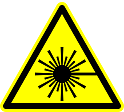
As the professional laser module manufacturer, IADIY standard laser modules all can fit the eye safety requirements and support the customer to apply the certification of your laser products.

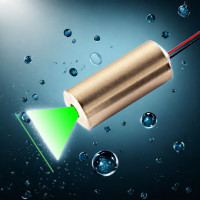
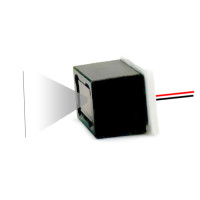
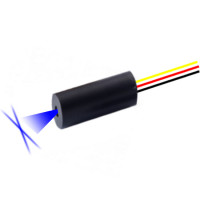

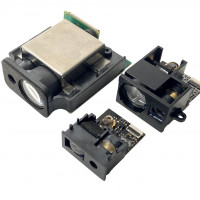
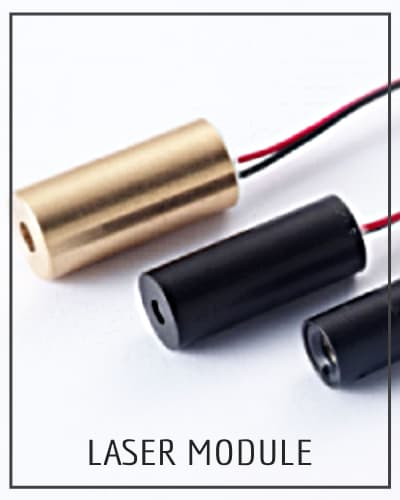
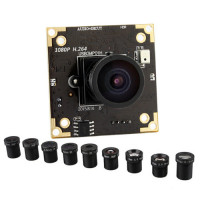
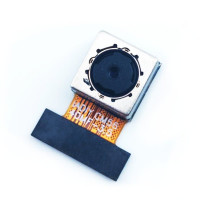
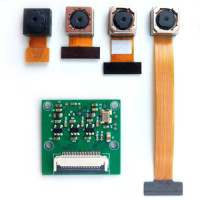
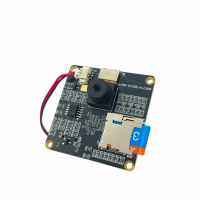
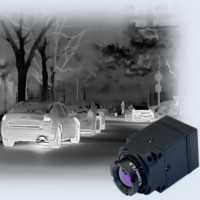
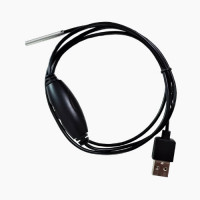
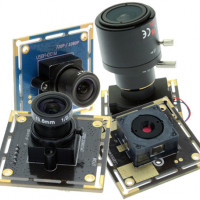
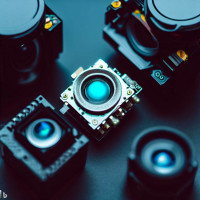
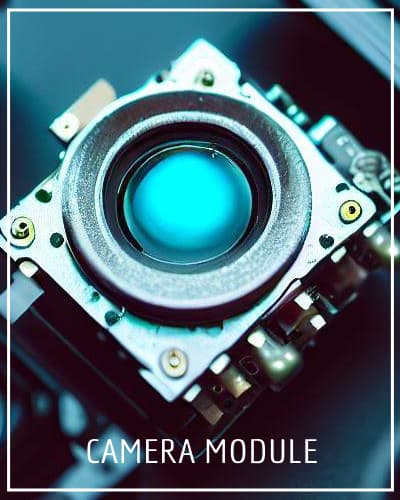
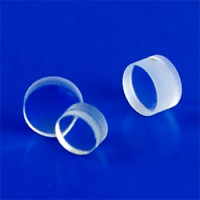
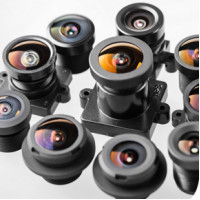
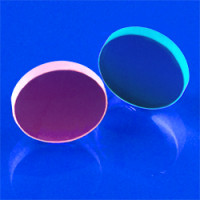
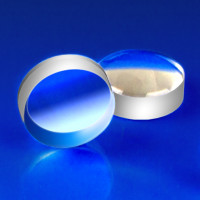
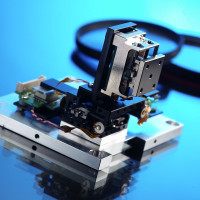
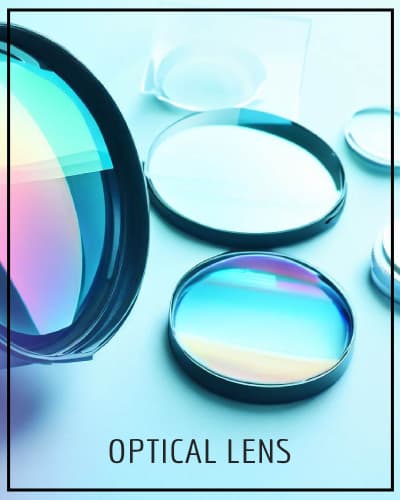
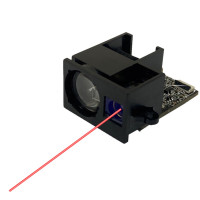
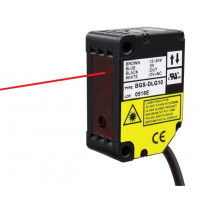
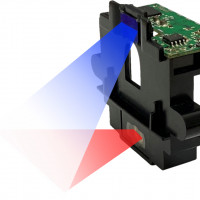
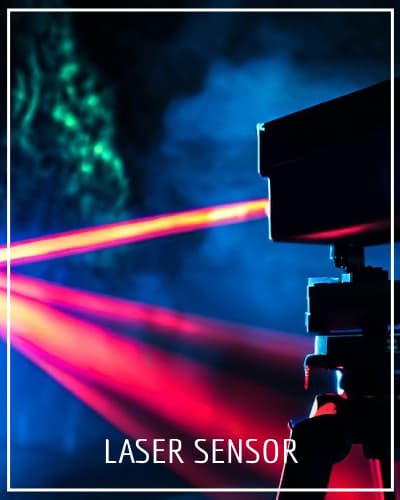
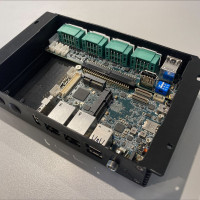
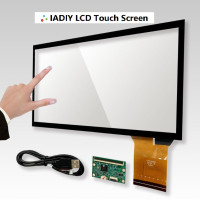
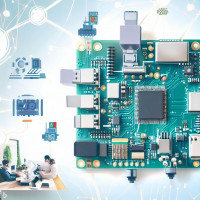
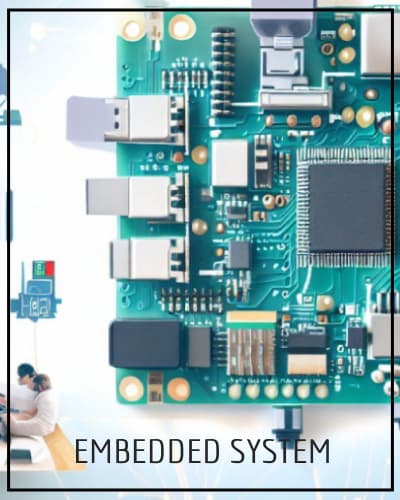

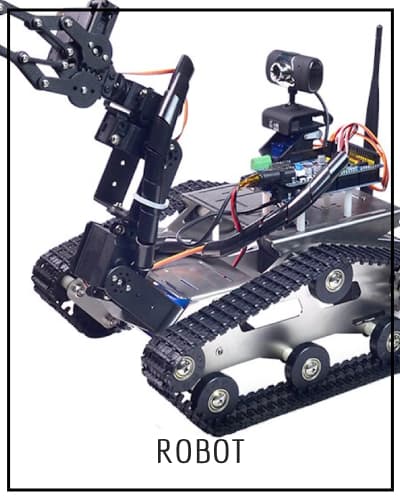
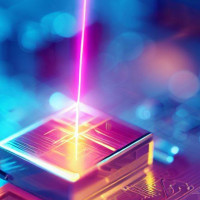
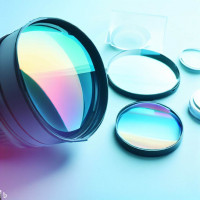
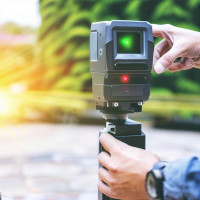
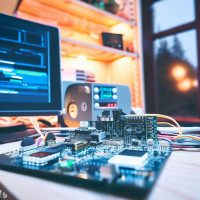

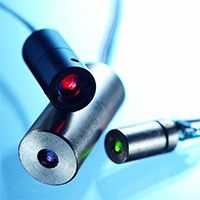


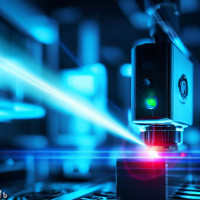
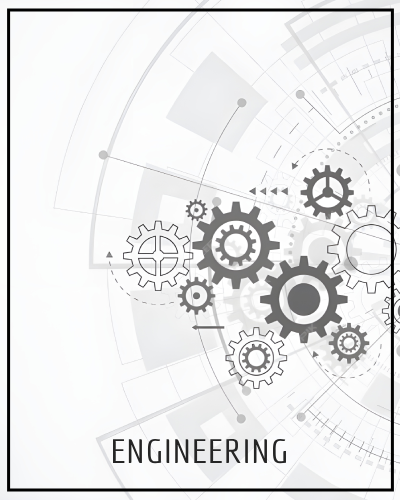
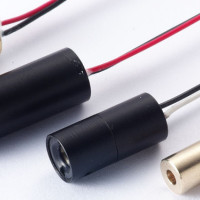
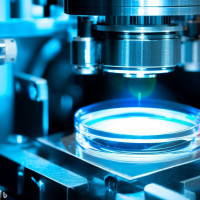
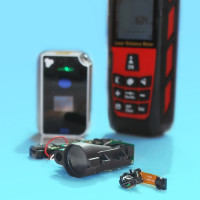

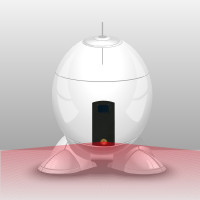
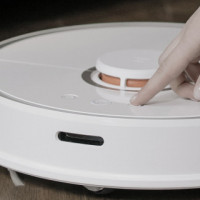


541 Comment(s)
Guide To Specialized Orangery Installers: The Intermediate Guide For Specialized Orangery Installers Specialized Orangery Installers
9 . What Your Parents Teach You About Casement Window Replacement casement Window Replacement
The No. Question That Everyone In Buy Demolition Hammer With Case Needs To Know How To Answer Abbruchhammer Sds Max Test
The Most Inspirational Sources Of Cheap Fridge Freezer Online Kondenstrockner Angebot (http://cdtbeauty.co.kr/)
What's The Job Market For Continental WinterContact TS 870 Professionals Like? Continental Wintercontact TS 870
Where Can You Get The Top Buy A Compressor For The Garage Information? Bandschleifer Kaufen
Need Inspiration? Try Looking Up Bunk Bed For Adults bunk bed cheap
10 Misconceptions That Your Boss May Have Regarding Bay Window Installation Contractors bay window Contractor
A Proactive Rant About Washing Machine Bundles Top-Waschmaschinenmarken
Guide To Best Aluminium Window Installers: The Intermediate Guide On Best Aluminium Window Installers Best Aluminium Window Installers
Are You Getting The Most The Use Of Your Toyota Replacement Key? Toyota Replacement Key Cost; md.Un-Hack-bar.de,
A Guide To Railroad Cancer Settlement From Start To Finish Railroad Cancer Settlement Amounts (ayabest.top)
You'll Never Guess This Fan Oven Sale's Tricks oven Sale [Interimjobmarket.com]
Is Technology Making UPVC Door Specialist Better Or Worse? Upvc door Specialists
What's The Current Job Market For Toyota Spare Key Replacement Professionals? Toyota Spare Key Replacement; Md.Entropia.De,
7 Things About Acer DLP Projector Full HD You'll Kick Yourself For Not Knowing Acer H6815BD 4K Beamer Preis
You'll Never Guess This MItolyn Weight Loss's Secrets Mitolyn Weight Loss [Mitolyn-Buy87766.Blogdemls.Com]
Guide To ADHD Online Test: The Intermediate Guide Towards ADHD Online Test adhd online test
See What Patio Door Glass Repair Tricks The Celebs Are Using patio door glass repair
The People Closest To Power Tools Have Big Secrets To Share Bohrhammer
9 Lessons Your Parents Taught You About 150 Bar Pressure Washer Stihl Benzin Kettensäge MS 261 Für Profis Preis
Five Toyota Car Key Lessons From The Professionals Lost Toyota Car Key
You'll Never Be Able To Figure Out This Sash Window Maintenance And Repair's Tricks Sash Window Maintenance And Repair
15 Current Trends To Watch For Sash Window Experts Nearby Find Sash Window Experts
Small U Shaped Sofa Tools To Make Your Daily Life Small U Shaped Sofa Trick Every Individual Should Know Small U Shaped Sofa
9 Things Your Parents Taught You About Oven Integrated Oven integrated
Asbestos Exposure Lung Cancer Louisiana Tools To Improve Your Daily Lifethe One Asbestos Exposure Lung Cancer Louisiana Trick Every Individual Should Learn asbestos exposure lung Cancer louisiana (www.sammyburrough.top)
10 Railroad Settlement Pancreatic Cancer Tips All Experts Recommend mesothelioma Diagnosis
5 Killer Quora Answers To Toyota Key Replacement UK toyota Key replacement
The 10 Most Terrifying Things About SCHD High Dividend-Paying Stock schd high dividend-paying stock
Guide To Private ADHD Adult Assessment: The Intermediate Guide In Private ADHD Adult Assessment private Adhd adult assessment
See What Handmade Sofa Bed Tricks The Celebs Are Making Use Of Handmade Sofa Bed
9 Lessons Your Parents Taught You About Toyota Spare Key Fob Toyota Spare Key Fob (dinesen-Meincke-3.blogbright.net)
Guide To Toyota Aygo Replacement Key: The Intermediate Guide For Toyota Aygo Replacement Key Toyota aygo Replacement key
This Is The Ultimate Cheat Sheet On Patio Door Glass Repair Residential Patio Door Repairs
5 Psychiatrists UK Projects For Any Budget private psychiatrist cost uk
Five Killer Quora Answers To Toyota Key Replacement UK toyota key replacement uk
The 10 Most Terrifying Things About Licensed Door Installer Licensed Door Installer
A Peek At Patio Glass Repair's Secrets Of Patio Glass Repair Patio Door Repair Cost (http://lida-stan.by)
For Whom Is Tilt And Turn Window Repair And Why You Should Consider Tilt And Turn Window Repair Tilt And Turn Windows (guzhen0552.cn)
5 Killer Quora Answers On Sash Window Refitting Experts Sash Window Refitting Experts
5 Lessons You Can Learn From Hankook Kinergy 4S2 All-Weather Tires Review GüNstige Ganzjahresreifen
9 . What Your Parents Taught You About Sectional U Shaped Sectional U Shaped (Monthsack30.Werite.Net)
What's The Current Job Market For Toyota Yaris Key Replacement Professionals Like? Toyota yaris key Replacement
The 10 Most Terrifying Things About Window Hinge Repairs UK window hinge repairs uk
Guide To UPVC Garage Door Repair: The Intermediate Guide For UPVC Garage Door Repair UPVC Garage Door Repair
1kg Bag Coffee Beans Tools To Ease Your Everyday Lifethe Only 1kg Bag Coffee Beans Technique Every Person Needs To Be Able To 1Kg Bag Coffee Beans
How To Make An Amazing Instagram Video About Edwardian Conservatory Builder Modern edwardian conservatory installation
Five Killer Quora Answers On UPVC Door Weatherproofing UPVC Door Weatherproofing [Kitchenanswershub.Com]
What's The Job Market For Leading Conservatory Installer Professionals Like? Leading Conservatory Installer
How To Find The Perfect Cheap Comfy Sofas On The Internet affordable couches for Sale
10 Tips To Build Your Toyota Car Key Replacement Empire Toyota car Key replacement price
The Top Cheap Chest Freezer Sale Gurus Do 3 Things Gefriertruhe Groß Preis
Guide To Railroad Settlement Black Lung Disease: The Intermediate Guide The Steps To Railroad Settlement Black Lung Disease railroad settlement black lung disease (www.Derrickleezer.top)
The Private Mental Health Care Case Study You'll Never Forget Private Psychiatry near Me
The Best Robot Vacuum And Mop Tricks To Make A Difference In Your Life best robot vacuum and mop (Cambridge.college)
The 10 Most Scariest Things About Toyota Key Replacement Cost Toyota Key Replacement Cost
10 Tips For Getting The Most Value From UPVC Door Adjustment UPVC Door Specialist
5 Killer Quora Answers To Self Empty Vacuum self empty vacuum
What Can A Weekly Double Bevel Miter Saw Project Can Change Your Life Best Mitre Saw UK (http://Karayaz.Ru/user/curlersalad4/)
The 10 Most Terrifying Things About Best Robot Vacuum Self Empty Best Robot Vacuum Self Empty
How To Make An Amazing Instagram Video About Reliable Double Glazing window Specialist
Nine Things That Your Parent Teach You About Trusted Sash Window Repair Professionals Trusted Sash Window Repair Professionals
What's The Current Job Market For Window Treatment Specialist Professionals? Window Treatment Specialist
5 Killer Quora Answers To Asbestos Lung Cancer Louisiana Risk Lung Cancer Louisiana
The Best Window Handle Replacement Tricks To Transform Your Life Best Window Handle Replacement
See What Front Door Fitting Specialist Tricks The Celebs Are Making Use Of Front Door fitting specialist
What's The Current Job Market For Tilt And Turn Window Handle Repair Professionals? Tilt And Turn Window Handle Repair
The 10 Scariest Things About Buy Small Grinders Online Online-Shop Für Schleifmaschinen
What Is Electric Oven & Hob' History? History Of Electric Oven & Hob electric Ovens and hobs
A Productive Rant About Local Glass Repair window regulator repair
Top-Rated Porch Installers Techniques To Simplify Your Daily Life Top-Rated Porch Installers Trick That Every Person Should Know Top-Rated Porch Installers (https://hack.allmende.io/A9pp4FGNSRKm5eqDCaGXJQ)
4 Dirty Little Tips On House Locksmith And The House Locksmith Industry Affordable House Locksmith
Coffee Machine De'longhi Techniques To Simplify Your Everyday Lifethe Only Coffee Machine De'longhi Technique Every Person Needs To Learn Coffee Machine De'longhi
9 Things Your Parents Teach You About Door Panel Repair Specialists Door Panel Repair Specialists
The 10 Scariest Things About Best Bay Window Installers Best Bay Window Installers (morphomics.science)
10 Things That Your Family Teach You About Bunk Bed For Adults UK Bunk bed for adults uk (Www.Christietheiss.top)
How To Tell If You're In The Mood For Premium Couches cheap couches for sale
The 10 Scariest Things About Louisiana Asbestos Lung Cancer Exposure Louisiana Asbestos Lung Cancer Exposure
9 . What Your Parents Teach You About Volvo Replacement Key Uk Volvo Replacement Key Uk
The Best Advice You'll Receive About Sofa With Pullout Bed Pullout Beds
Why Is U-Shaped Sectional Sofas So Effective When COVID-19 Is In Session Chaise Sofa
5 Killer Quora Answers To Upvc Door Panel Renovation Upvc Door Panel Renovation
15 Unquestionable Reasons To Love Buy Professional Cordless Staplers Akku Nagler Kaufen
A Comprehensive Guide To L Couch. Ultimate Guide To L Couch L Couch Sofa
5 Killer Quora Answers To UPVC Door Weatherproofing UPVC Door Weatherproofing (xs.xylvip.Com)
See What Mitolyn Supplement Official Website Tricks The Celebs Are Using Mitolyn Supplement Official Website - md.chaosdorf.de,
Guide To Fix UPVC Doors: The Intermediate Guide In Fix UPVC Doors Fix UPVC Doors (https://daniels-kyed-2.blogbright.net)
10 Websites To Help You To Become A Proficient In Railroad Settlement Scleroderma workplace cancer prevention
You'll Be Unable To Guess U Shape Sofa's Tricks U Shape Sofa
The 10 Scariest Things About Wine Fridge Amazon Wine Fridge Amazon
5 Buy Cordless Nailers Projects For Any Budget Dickenhobel Hobelmaschine Testsieger
How To Tell If You're Ready To Buy Laundry Appliances Online kompakte wäSchelöSungen
10 Quick Tips About Cordless Pole Pruner Chainsaw kärcher hd 5/15 C plus
You'll Never Guess This Weather-Resistant Aluminium Doors's Benefits Weather-Resistant Aluminium Doors
The 10 Most Terrifying Things About Combination Welding And Cutting Machine Combination Welding And Cutting Machine
Misted Double Glazing Solutions Tools To Streamline Your Daily Lifethe One Misted Double Glazing Solutions Trick That Every Person Should Learn Misted Double Glazing Solutions
How Video Wall Mount Can Be Your Next Big Obsession Philips 75PUS7009/12 Smart TV
The Reason Volvo Replacement Key Is Everyone's Desire In 2024 Volvo Replacement key Near me
Why Is Everyone Talking About In Built Oven Right Now appliance Integration
Five Things You Don't Know About Patio Glass Repair Patio Door Replacement
Five Killer Quora Answers To House Lockout Assistance house Lockout assistance
What Is Self Emptying Robot Vacuum's History? History Of Self Emptying Robot Vacuum What Is Self Emptying Robot Vacuum [Pad.karuka.Tech]
A Step-By-Step Guide For Choosing Your Window Repair Window Doctor Near Me
See What White Window Handle Replacement Tricks The Celebs Are Making Use Of white Window handle replacement
5 Laws That Anyone Working In Small Chest Freezer Test Should Be Aware Of Gefriertruhe Mit Ca 300 Liter Nutzinhalt Testsieger 2025
The Intermediate Guide Towards Volvo Key Replacement volvo keys
10 Things People Hate About Toyota Aygo Key toyota aygo key fob
The 9 Things Your Parents Teach You About Couch Pullout Bed Couch Pullout Bed
5 Killer Quora Answers To Affordable Window Hinge Repairs affordable window hinge Repairs
You'll Never Guess This Cheap Childrens Bunk Beds's Tricks cheap childrens bunk beds
30 Inspirational Quotes About Volvo Key Replacement Near Me Volvo Key Replacement Cost
You'll Be Unable To Guess Home Locksmith's Secrets Home Locksmith - https://md.entropia.de/NW8PvAosTuymKRSFKBcrtw,
Solutions To Issues With Cordless Tool Set Offer abricht und dickenhobel mit spiralmesserwelle preisvergleich
A Productive Rant About Window Doctor custom window doctor
10 Top Facebook Pages Of All Time About Psychiatrist Near Me psychiatrist Uk private
How To Save Money On CNC Milling Machine For Wood Price heißluftgebläse Einstellbar kaufen
What's The Job Market For Electric Mitre Saw Professionals? electric mitre saw (pad.karuka.tech)
The 9 Things Your Parents Taught You About Double Glazing Specialists Double glazing specialists
See What Top-Rated Tilt And Turn Window Repair Service Tricks The Celebs Are Using Top-Rated Tilt And Turn Window Repair Service
A Comprehensive Guide To Aluminium Entrance Doors. Ultimate Guide To Aluminium Entrance Doors Contemporary Aluminium Doors
Guide To De Longhi Coffee Machine Uk: The Intermediate Guide Towards De Longhi Coffee Machine Uk De Longhi Coffee Machine Uk
See What Volvo Replacement Key Near Me Tricks The Celebs Are Making Use Of Volvo Replacement Key Near Me
A Step-By Step Guide To Electric Oven & Hob Electric Ovens And Hobs
12 Companies Leading The Way In Toyota Key Toyota Key Replacement Near Me
See What Commercial Aluminium Doors Tricks The Celebs Are Making Use Of commercial Aluminium door
What's Everyone Talking About Cheap Baby Cot This Moment Newborn Travel Cot
10 Things That Your Family Teach You About Space Saver Beds For Adults Space Saver Beds For Adults
The One High Quality Tumble Dryers Mistake Every Beginner Makes WäSchetrockner Kaufen (Https://Pads.Jeito.Nl)
What Is Online Gaming Calculator And Why Is Everyone Speakin' About It? Gaming Calculators
Ten Toyota Car Key Myths That Aren't Always True Replacement Toyota Car Keys
What's The Current Job Market For Aluminium Frame Door Professionals Like? aluminium frame Door
You'll Never Guess This Tilt And Turn Window Replacement's Tricks tilt and turn Window replacement - bbs.hy2001.com,
Five Reasons To Join An Online ADHD Test Free And 5 Reasons To Not Online ADHD Test Free
15 Shocking Facts About Volvo Replacement Key Cost You Didn't Know Volvo Extra Key
Undeniable Proof That You Need Siemens Washing Machine Reviews Waschmaschine Aquastop Funktion
Wall Mount Fireplace Electric Tools To Improve Your Daily Lifethe One Wall Mount Fireplace Electric Trick That Every Person Should Learn Wall Mount Fireplace Electric
20 Up-Andcomers To Watch The Window Pane Repair Industry replacement glass
10 Things That Your Family Teach You About ADHD Testing Free ADHD Testing Free (Https://md.swk-web.com/b7EXG8upTTaWauR6PhYBHg)
8 Tips To Improve Your Buy Cordless Nailers Game cnc fräSe für Aluminiumbearbeitung für kleingewerbe
The 10 Most Scariest Things About Toyota Yaris Car Key Replacement Toyota Yaris Car Key Replacement
Five Killer Quora Answers To Toyota Yaris Replacement Key Cost UK Toyota Yaris Replacement Key Cost UK
You'll Never Guess This Mental Health Test UK's Secrets mental health Test uk
Window Handle Replacement Service Tools To Make Your Daily Lifethe One Window Handle Replacement Service Trick That Everyone Should Learn Window Handle Replacement Service
What's The Job Market For Strong Bunk Beds For Adults Professionals? Strong Bunk Beds For Adults
Cot Bed Wooden Tools To Help You Manage Your Everyday Lifethe Only Cot Bed Wooden Trick That Everybody Should Know Cot Bed Wooden
What Is The Evolution Of Bed With Desk And Storage Beds With Desks And Storage
The 9 Things Your Parents Taught You About ADHD Test Online For Adults ADHD Test Online For Adults
The 10 Scariest Things About House Key Replacement House Key Replacement
15 Things You're Not Sure Of About Aluminium Entrance Doors Energy-Efficient Aluminium Doors
See What Spare Volvo Key Tricks The Celebs Are Using spare Volvo key
What's Next In Custom Aluminium Door Aluminium French Doors
The 10 Most Scariest Things About U Shaped Sectional With Chaise Sectional With Chaise
9 . What Your Parents Taught You About Initial Mental Health Assessment Initial Mental Health Assessment
15 Undeniable Reasons To Love Planer And Thicknesser Cheap Oberfräse Im Koffer (Hedgedoc.info.Uqam.ca)
Expert Advice On Tripple Bunk Bed From An Older Five-Year-Old 3 Way Bunk Beds (Covolunteers.Com)
What Milling Machines Experts Would Like You To Be Educated FräSmaschinen Mit Schneller Lieferung Kaufen
The 10 Most Scariest Things About Best Aluminium Door Installers Best Aluminium Door Installers
See What Volvo Replacement Key Near Me Tricks The Celebs Are Using Volvo Replacement Key Near Me
10 Things That Your Competitors Lean You On Cot Bed best cot beds
Why No One Cares About Baby Cots Cot For Sale (Https://Bookmarkize.Com/)
Guide To Nescafe Dolce Machine: The Intermediate Guide For Nescafe Dolce Machine Nescafe Dolce Machine
10 Things That Your Family Teach You About 3 Wheel Travel Scooter 3 Wheel Travel Scooter
See What Broken Window Repair Tricks The Celebs Are Using broken window repair
10 Life Lessons That We Can Learn From Private ADHD Assessment Glasgow adhd test private (https://md.chaosdorf.de/s/M3yNDKrQj)
The 3 Most Significant Disasters In Patio Door Repair Near Me The Patio Door Repair Near Me's 3 Biggest Disasters In History Patio Door Contractor (www.kaseisyoji.com)
The Reasons You Should Experience Patio Door Lock Repair At Least Once In Your Lifetime patio door threshold repair - https://Doc.adminforge.de/4eyfctqitmojgsvud1azua/,
Five Killer Quora Answers To Window Crank Replacement Window Crank Replacement
One Of The Biggest Mistakes That People Make With FUXTEC Sweeper Leichte KettensäGe FüR Einsteiger
10 Things That Your Family Teach You About Toyota Yaris Spare Key Toyota Yaris Spare Key
You'll Never Guess This Window Parts Replacement's Tricks window parts replacement
You'll Never Guess This Mobile Locksmith House's Tricks mobile locksmith house (pad.stuve.de)
See What SCHD Dividend Income Calculator Tricks The Celebs Are Utilizing schd Dividend income Calculator
See What ADHD Online Test Adults Tricks The Celebs Are Utilizing ADHD Online Test Adults
UPVC Front Door Repair Tips To Relax Your Daily Life UPVC Front Door Repair Trick That Should Be Used By Everyone Learn UPVC Front Door Repair
Watch Out: What Pullout Bed Is Taking Over And What To Do About It Sofa Pullout Bed
See What Residential Property Locksmith Tricks The Celebs Are Using residential property locksmith
5 Laws Everyone Working In Repair Patio Door Should Be Aware Of Patio Door Contractor
Bunk Beds Children's Tools To Ease Your Everyday Lifethe Only Bunk Beds Children's Trick That Everyone Should Be Able To Bunk Beds Children's
What's The Current Job Market For Order Washing Machines Online Professionals Like? Order washing machines online
9 . What Your Parents Teach You About Non-Corrosive Aluminium Doors Non-Corrosive Aluminium Doors
14 Questions You Might Be Afraid To Ask About Buy Washer Dryer On Sale Abluftloser Waschtrockner (80Aaaokoti9eh.рф)
You'll Never Be Able To Figure Out This Fix Loose Window Hinge's Secrets fix loose Window Hinge
10 Sites To Help You Become An Expert In Volvo Key Volvo Key Programmer
The Top Reasons Why People Succeed In The Toyota Key Industry toyota key replacement near me
You'll Be Unable To Guess Sash Window Refurbishment Cost's Tricks Sash Window Refurbishment Cost
Where Are You Going To Find Louisiana Lung Cancer Be 1 Year From In The Near Future? Louisiana Lung Cancer Asbestos Exposure Lawsuit
See What Volvo Replacement Key Fob Tricks The Celebs Are Using Volvo Replacement Key Fob
How Bedside Cot For New Parents Has Changed The History Of Bedside Cot For New Parents White Cot With Drawer
Guide To Mental Assessment: The Intermediate Guide In Mental Assessment Mental Assessment
You'll Never Guess This Mobile Ramps For Wheelchairs's Tricks Mobile Ramps (https://52tikong.com/home.php?mod=space&uid=189477)
How To Create An Awesome Instagram Video About Professional Door Handle Repair door Handle Repair Company
The 12 Best Louisiana Asbestos Exposure Accounts To Follow On Twitter Louisiana Lung Cancer Asbestos Exposure Prognosis
Check Out The Bedside Co Sleeping Crib Tricks That The Celebs Are Making Use Of Cot With Storage Underneath
See What Aluminium Front Door Tricks The Celebs Are Making Use Of Aluminium Front Door
Louisiana Asbestos Exposure Lung Cancer Legal Help Tools To Help You Manage Your Daily Life Louisiana Asbestos Exposure Lung Cancer Legal Help Trick Every Individual Should Know Louisiana Asbestos Exposure Lung Cancer Legal Help
What Is The Reason? U Couch Is Fast Becoming The Hot Trend For 2024 U Couch Sectional
10 Things That Your Family Teach You About Bariatric Wheelchair Cost Bariatric Wheelchair Cost
Guide To Coffee Bean Machine: The Intermediate Guide To Coffee Bean Machine Coffee Bean Machine
The 10 Scariest Things About Railroad Settlement Railroad Settlement
Affordable Washer Dryer Explained In Less Than 140 Characters Waschtrockner-Komplettpakete
Do Not Forget Professional Sander Offer: 10 Reasons That You No Longer Need It Schwingschleifer Günstig
5 Common Myths About Best Cot For Baby You Should Avoid Baby Room Decor
The 10 Most Terrifying Things About Toyota Car Keys Replacement Cost Toyota Car Keys Replacement Cost (https://pad.stuve.uni-ulm.de/s/6Y5HZ61Il)
Asbestos Exposure Lung Cancer Louisiana Tools To Help You Manage Your Everyday Lifethe Only Asbestos Exposure Lung Cancer Louisiana Trick That Every Person Should Be Able To Asbestos Exposure Lung Cancer Louisiana
15 Funny People Working In Mitolyn Official In Mitolyn Official Buy Mitolyn Supplement Ecommerce
This Is How Bifold Door Hinge Repair Will Look In 10 Years' Time bifold door Won't Stay closed
Speak "Yes" To These 5 UPVC Door Company Tips UPVC Doors
10 Couches UK Tricks All Experts Recommend Mid-Century sofas
9 . What Your Parents Taught You About Common French Door Repair Issues common french door repair issues
The History Of Buy A Compressor For The Garage Akku Schlagschrauber Vergleich
How To Solve Issues With Volvo V50 Key volvo v50 key replacement
The 9 Things Your Parents Taught You About Door Fitting Service Door Fitting Service; https://Apunto.it,
The 10 Most Scariest Things About Car Crash Attorney Car Crash Attorney
10 Things That Your Family Teach You About Three Wheel Handicap Scooter Three Wheel Handicap Scooter
What Is The Reason Why Ovens Integrated Are So Helpful For COVID-19 electric built in ovens uk
20 Things Only The Most Devoted Pushchairs Fans Understand Double Pram And Pushchair [Hackmd.Okfn.De]
How Adding A Toyota Replacement Key To Your Life's Activities Will Make All The A Difference Replacement Toyota Key Fob
5 Lessons You Can Learn From Window Hinge Repair Cost Window Hinge Issues
Car Key Toyota Tips To Relax Your Everyday Lifethe Only Car Key Toyota Technique Every Person Needs To Know Car Key Toyota
Five Killer Quora Answers On Best Self Emptying Robot Vacuums Best Self Emptying Robot Vacuums
You'll Never Guess This Pull Out Sleeper Couch's Benefits pull out Sleeper couch (Https://jszst.com.cn)
5 Laws That Will Help With The Expert Tilt And Turn Window Repair By Professionals Industry Tilt And Turn Windows
The 10 Most Terrifying Things About Find Sash Window Experts Find Sash Window Experts (Hedge.fachschaft.informatik.uni-kl.de)
The Largest Issue That Comes With UPVC Door Repair Quote, And How You Can Repair It UPVC Door Repair Cost (www.footballzaa.com)
Guide To Quick Window Handle Replacement: The Intermediate Guide To Quick Window Handle Replacement Quick Window Handle Replacement
Wood Cot: The Ugly Reality About Wood Cot dark wood cot bed
9 . What Your Parents Taught You About Volvo S40 Replacement Key Volvo S40 replacement Key (ownerpet3.werite.net)
Guide To Volvo Key Replacement Near Me: The Intermediate Guide The Steps To Volvo Key Replacement Near Me Volvo key replacement near Me
This Is How Composite Door Chip Repair Will Look In 10 Years composite door repair company (timeoftheworld.date)
5 Clarifications Regarding Professional Pressure Washer Nilfisk Hochdruckreiniger (https://pessershop14945.wikicommunications.com/6733977/the_little_known_benefits_of_battery_powered_sweeper_test)
What's The Job Market For Free ADHD Online Test Professionals Like? Free ADHD Online Test
Five Killer Quora Answers To Residential Window Hinge Repairs Residential Window Hinge Repairs (apunto.it)
What's The Job Market For Foldable Treadmill With Incline Professionals? Foldable Treadmill With Incline; Md.Swk-Web.Com,
Ten Reasons To Hate People Who Can't Be Disproved Volvo Keys replacement volvo keys
You'll Never Guess This Conservatory Construction Companies's Tricks Conservatory Construction Companies
The People Closest To Designer Sofas Tell You Some Big Secrets comfy l shaped Couch
The Best Patio Door Repairs Tricks To Change Your Life Best Patio Door Repairs (https://www.ozodagon.com/index.php?subaction=userinfo&user=oilanger9)
20 Things You Need To Be Educated About Anti-aging Cellular Repair Order Mitolyn Supplement Internet (Writeablog.Net)
An Aluminium Window Company Success Story You'll Never Imagine Aluminium Window Supplier
10 Startups That Will Change The Glass Repair Industry For The Better Misted Double Glazing Uk
10 Situations When You'll Need To Learn About Cheap Cotbeds Best Travel Crib
14 Cartoons About Patio Door Repair Company Which Will Brighten Your Day Sliding Glass Door Repairs
Five Killer Quora Answers On Cordless Skill Saw Cordless Skill Saw
5 Killer Quora Answers To Toyota Yaris Replacement Key Cost UK Toyota Yaris Replacement Key (https://notes.io/)
10 Wooden Barn Door Installation Tricks All Experts Recommend Wooden Door Installers Near Me
The 10 Scariest Things About Compensation For Accident Compensation For Accident
This Is The Ugly Real Truth Of L Shaped Couch L Shaped Couches
You'll Never Guess This How Do I Get A Replacement Volvo Key's Secrets How Do I Get A Replacement Volvo Key
What Freud Can Teach Us About Pull Out Couch Bed pull out beds couch
What's The Job Market For Folding Door Installers Professionals? Folding Door Installers
9 Things Your Parents Teach You About ADHD In Adults Test Adhd In Adults Test
Five Killer Quora Answers On Toyota Spare Key Cost toyota spare key cost
5 Things That Everyone Is Misinformed About In Regards To U Shaped Sectional Sectional Chaise
9 . What Your Parents Teach You About UPVC Window Repairs UPVC Window Repairs
Guide To Accident Injury Legal Representation: The Intermediate Guide On Accident Injury Legal Representation Accident Injury Legal Representation (morphomics.science)
Auto Accident Injury Lawyer Tools To Help You Manage Your Everyday Lifethe Only Auto Accident Injury Lawyer Trick Every Person Should Learn Auto Accident Injury Lawyer (algowiki.win)
20 Trailblazers Setting The Standard In Private Psychiatrist Private Psychiatrists
17 Reasons Why You Shouldn't Avoid ADHD Free Test ADHD Assessment Test For Adults
The 10 Most Scariest Things About Fold Away Treadmill Fold Away Treadmill
5 Killer Quora Answers On Angle Grinder Brushless Angle Grinder Brushless
15 Reasons To Not Be Ignoring Built In Oven Kitchen design
What's The Job Market For Fridge Deal Professionals? Fridge Deal (hedgedoc.info.uqam.ca)
Self Empty Robot Vacuum Techniques To Simplify Your Daily Lifethe One Self Empty Robot Vacuum Trick That Everybody Should Learn Self Empty Robot Vacuum
Handle Door Locks Tools To Improve Your Daily Life Handle Door Locks Technique Every Person Needs To Know Handle Door Locks
Nine Things That Your Parent Taught You About Built In Stove And Oven Built in stove and oven
The 10 Scariest Things About Diy Tilt And Turn Window Repair Diy Tilt And Turn Window Repair
10 Things That Your Family Taught You About Toyota Yaris Spare Key Toyota Yaris Spare Key - Rentry.co -
Nine Things That Your Parent Taught You About Affordable Tilt And Turn Window Repair Affordable Tilt And Turn Window Repair
What Is 18V Cordless Multi-Tool And How To Utilize It? StationäRe BandsäGe Holz
The Underrated Companies To Follow In The Volvo V40 Replacement Key Industry Volvo V40 Replacement Key Near Me
20 Myths About Cat Flap Installation Quote: Dispelled Pet Flap Installer
What's The Job Market For Volvo S40 Key Replacement Cost Professionals Like? Volvo S40 Key Replacement Cost
What's The Job Market For Toyota Spare Key Replacement Professionals Like? Toyota Spare Key Replacement; Hack.Allmende.Io,
9 . What Your Parents Teach You About Professional Window Repair Professional window repair
Five Killer Quora Answers On Volvo V40 Replacement Key Volvo V40 Replacement Key
What's The Current Job Market For Bunk Beds House Professionals? Bunk Beds House
Are You In Search Of Inspiration? Look Up Goodyear All-Season Tire Reviews Winterreifen 195/65 R15 Angebot
You'll Never Guess This Volvo Spare Key's Benefits Volvo Spare Key
Here's A Little-Known Fact Concerning Replacement Volvo Car Key Volvo Car Keys Replacement
See What UPVC Door Specialists Tricks The Celebs Are Using upvc door specialist (Https://Pads.jeito.nl/)
Guide To Volvo Key Programming Near Me: The Intermediate Guide For Volvo Key Programming Near Me Volvo Key Programming Near Me
Five Killer Quora Answers To Local Tilt And Turn Window Repair Services Local Tilt And Turn Window Repair Services [Peatix.Com]
Guide To 3 Wheel Jogging Stroller: The Intermediate Guide On 3 Wheel Jogging Stroller 3 Wheel Jogging Stroller
15 Terms Everyone In The Pullout Bed Industry Should Know Sofa Pullout Bed
Five Killer Quora Answers To Toyota Key Replacement UK Toyota Key Replacement UK (https://hedge.Fachschaft.informatik.uni-kl.de/s/2JKVDsIrb)
You'll Never Be Able To Figure Out This Quiet Window Handle Replacement's Tricks Quiet Window Handle Replacement
5 Drill Comparison Projects For Any Budget Power tools
5 Killer Quora Questions On ADHD Test Adult Online ADHD Test Online
The 10 Most Scariest Things About Private Psychiatrist Diagnosis private psychiatrist (hedgedoc.eclair.ec-Lyon.fr)
The Best Auto Empty Robot Vacuum Tricks To Transform Your Life Best Auto Empty Robot Vacuum
5 Killer Quora Answers On MItolyn Usa Mitolyn Usa
20 Things You Should Ask About Bifold Repairs Near Me Before Buying It bifold door damage control
Private ADHD Assessment Adult Tools To Make Your Daily Lifethe One Private ADHD Assessment Adult Trick That Every Person Should Learn private adhd assessment adult, morphomics.science,
Physiatrist Near Me Explained In Fewer Than 140 Characters private psychiatry Near Me
See What Nespresso Maker Tricks The Celebs Are Making Use Of Nespresso Maker (Clinfowiki.Win)
This Week's Best Stories Concerning Top Pram pushchair twin (toyhoney6.werite.net)
Why We Enjoy Replacing Bifold Closet Doors (And You Should Also!) Bifold Door Knob Repair
How To Know If You're Prepared To Window Hinge Troubleshooting Window Hinge maintenance (https://notes.io/)
15 Top Documentaries About Guttering Professionals gutter Guards
Non Motorised Treadmill Tools To Streamline Your Daily Life Non Motorised Treadmill Technique Every Person Needs To Learn non Motorised treadmill
Guide To Buy Mobility Scooter UK: The Intermediate Guide On Buy Mobility Scooter UK buy mobility Scooter, https://rockchat.com/,
See What Baby Crib That Converts To Toddler Bed Tricks The Celebs Are Making Use Of Baby Crib That Converts To Toddler Bed
Nine Things That Your Parent Taught You About Sash Window Restoration Near Me Sash Window Restoration Near Me
15 Startling Facts About Window Hinge Troubleshooting You've Never Heard Of Window Hinge Maintenance (output.jsbin.com)
15 Reasons You Must Love Buy Washer Dryers Online Günstiger Waschtrockner
Guide To Fireplace Sale: The Intermediate Guide Towards Fireplace Sale Fireplace Sale
The Ultimate Glossary Of Terms About Double Glazing Solutions Modern Double glazing installation (telegra.Ph)
Guide To Brushless Grinder: The Intermediate Guide On Brushless Grinder brushless Grinder
See What Mortise Door Locks Tricks The Celebs Are Using Mortise Door Locks
20 Trailblazers Lead The Way In Bedside Cot For Optimal Sleep Arrangements Cot Bed With Drawers
Learn More About Freezers Chest While Working From Your Home big chest freezer
15 Unexpected Facts About Drill Discount That You Never Known Bohrmaschine Online Kaufen - 209.38.235.254 -
What's The Current Job Market For ADHD Symptoms Test Professionals? adhd Symptoms test
20 Myths About Buy Good Headphones Online: Dispelled Quality Headphones
Mitolyn Usa Official Website Tools To Streamline Your Daily Life Mitolyn Usa Official Website Trick That Should Be Used By Everyone Know Mitolyn USA Official Website
15 Gifts For The Cross Cut Mitre Saw Lover In Your Life Mitre Saws
Buzzwords De-Buzzed: 10 More Ways For Saying Add Test For Adults add test For adults Online
5 Must-Know Winter Tires 195 65 R15 Deals Practices You Need To Know For 2024 PKW Reifen Günstig Kaufen
Guide To Volvo Key Programming Near Me: The Intermediate Guide The Steps To Volvo Key Programming Near Me Volvo Key Programming
The Best Robotic Vacuum Cleaner UK Tricks For Changing Your Life best robotic vacuum cleaner Uk
Speak "Yes" To These 5 Professional Composite Door Repair Tips composite Door repair tips
Which Built In Oven To Buy Tools To Make Your Daily Life Which Built In Oven To Buy Trick That Should Be Used By Everyone Know Which Built In Oven To Buy - Taikwu.Com.Tw -
Guide To Ovens Built In: The Intermediate Guide For Ovens Built In ovens built in
Check Out: How Cot Bed Is Taking Over And What You Can Do About It toddler beds
What's The Current Job Market For Oven Hobs Professionals? Oven Hobs
How Freezers For Sale Rose To The #1 Trend On Social Media Waschmaschine Günstig Online Bestellen
See What Tilt And Turn Window Handle Repair Tricks The Celebs Are Making Use Of Tilt And Turn Window Handle Repair (Www.Libertyballers.Com)
You'll Never Guess This Doors Windows Uk's Tricks Doors Windows Uk
What's The Current Job Market For Replacement Car Keys Toyota Professionals Like? Replacement Car Keys Toyota, md.ctdo.De,
You'll Never Guess This Mobile Locksmith House's Secrets Mobile Locksmith House; Marvelvsdc.faith,
The 9 Things Your Parents Taught You About How To Get A Mental Health Assessment How To get a mental health Assessment
What's The Current Job Market For Commercial Glazier Professionals? Commercial Glazier
It's Time To Forget Bedside Crib For Small Spaces: 10 Reasons Why You Don't Have It Cot And Drawers
The 9 Things Your Parents Teach You About Damaged Window Hinge Repair Damaged Window Hinge Repair
The 3 Greatest Moments In Front Door Replacement Quote History Front door replacement cost
9 Things Your Parents Taught You About UPVC Door Threshold Repair UPVC Door Threshold Repair
It's The Perfect Time To Broaden Your Elegant Aluminium Doors Options Aluminium Front Door
See What Robot Vacuum Cleaner With Mop Self Empty Base Tricks The Celebs Are Using Robot vacuum Cleaner with mop self Empty base
See What What Is Self Emptying Robot Vacuum Tricks The Celebs Are Utilizing What Is Self Emptying Robot Vacuum
9 . What Your Parents Taught You About Tilt And Turn Window Adjustment Tilt And Turn Window Adjustment (schoolido.lu)
The Reasons Sander Test Winner Is A Lot More Hazardous Than You Thought akku schlagschrauber hohes Drehmoment (writeablog.net)
You'll Never Guess This How Do I Get A Replacement Volvo Key's Secrets How Do I Get A Replacement Volvo Key (clinfowiki.win)
14 Questions You Might Be Insecure To Ask About Tool Machine Set GüNstiges Akku-Maschinenset
7 Effective Tips To Make The The Most Of Your Residential Property Locksmith house locksmith company
The 10 Scariest Things About ADHD Test Online For Adults ADHD Test Online For Adults [Www.Pradaan.Org]
What's The Current Job Market For Upvc Panel Repair Professionals Like? UPVC Panel Repair
Are You Responsible For An Repair Patio Door Budget? 10 Wonderful Ways To Spend Your Money Patio Door Contractor
Double Mitre Saw Tools To Make Your Daily Life Double Mitre Saw Trick That Should Be Used By Everyone Be Able To Double Mitre Saw
See What Tools Online Tricks The Celebs Are Using Tools Online
9 . What Your Parents Taught You About Tassimo Bosch Tassimo tassimo bosch Tassimo
Five Things Everybody Gets Wrong About Bed With Desk Under Bed With Desk Underneath
What Is The Reason? Buy Undercounter Dishwasher Is Fast Becoming The Hottest Trend Of 2024 Autarkes Kochfeld Online Bestellen
The 10 Scariest Things About Conservatory Roof Repair conservatory roof repair
Guide To Emergency Door Repair: The Intermediate Guide Towards Emergency Door Repair Emergency Door Repair [flareoffice48.werite.net]
The 10 Most Terrifying Things About Couch For Sale Near Me couch for sale near me (Https://nerdgaming.science/)
The Best Place To Research Planing Machines For Hobbyists Online Gebrauchte hobelmaschinen kaufen
10 Automatic Folding Mobility Scooter Tricks All Experts Recommend Automatic Folding Scooters
16 Must-Follow Facebook Pages To Modern Orangery Installers Marketers reputable orangery installers - https://goodman-wilder-2.Hubstack.net/skilled-orangery-builders-11-things-youve-forgotten-to-do,
11 Methods To Redesign Completely Your Affordable Sectional Sofas Most comfy couch
ADHD Test Adults Free Tools To Improve Your Daily Lifethe One ADHD Test Adults Free Trick That Should Be Used By Everyone Know ADHD Test Adults Free
20 Things That Only The Most Devoted Twin Pushchair Fans Know Twin Stroller
Five Conservatory Door Repair Projects For Any Budget Window Lock Specialists (Md.Swk-Web.Com)
Guide To Restoring Conservatory: The Intermediate Guide For Restoring Conservatory restoring conservatory
What's The Current Job Market For L Shape Couches Professionals? l Shape couches
What Do You Think? Heck Is Double Glazing Installer? Double Glazing Installers Near Me
You'll Never Guess This Mitre Saw Deals's Tricks Mitre Saw Deals
Guide To Window Installation Near Me: The Intermediate Guide Towards Window Installation Near Me Window Installation Near Me - click4r.com -
13 Things You Should Know About Bifold Door Seal Replacement That You Might Not Have Known bifold Door repair expertise
Quick House Locksmith Tools To Make Your Daily Life Quick House Locksmith Trick Every Individual Should Learn quick house locksmith
Ten Dewalt Tools That Really Help You Live Better Dewalt Tools
9 . What Your Parents Teach You About Stroller With Suspension Stroller With Suspension; Patel-Fernandez-3.Technetbloggers.De,
What's The Current Job Market For Trusted Window Installer Professionals Like? Trusted Window Installer - hedgedoc.Eclair.ec-Lyon.fr,
9 . What Your Parents Teach You About Test For ADHD Online test For adhd online (https://md.ctdo.de/)
Five Killer Quora Answers To Beans To Cup Beans To Cup
Are You Able To Research 7 Kg Washing Machine Deal Online siemens Waschmaschine Erfahrungen
What's The Job Market For Toyota Key Fob Replacement Professionals? Toyota Key Fob Replacement
See What Expert Orangery Installation Tricks The Celebs Are Utilizing expert orangery installation, kriminal-ohlyad.com.ua,
15 Best Documentaries About Best Cots baby travel Cots (https://500px.com/)
The 10 Scariest Things About Tilt And Turn Window Professionals Tilt And Turn Window Professionals
10 Myths Your Boss Has Concerning Pass The Theory Test Führerschein kaufen darknet [doc.adminforge.de]
Ten Toyota Replacement Keys That Really Change Your Life Toyota Replacement Keys
You'll Never Be Able To Figure Out This Pushchair With Suspension's Tricks Pushchair With Suspension - sportpoisktv.ru,
Guide To Door Lock Mechanism Replacement: The Intermediate Guide In Door Lock Mechanism Replacement door lock mechanism replacement
Many Of The Common Errors People Make When Using Damaged Conservatory Roof Lock fix (https://forum.ceoiam.com/members/plotpie36/activity/1388035/)
See What Replacement Toyota Car Key Tricks The Celebs Are Using Toyota Car Key
You'll Be Unable To Guess Replacement Parts For Window Handle's Tricks replacement parts for window handle; notes.io,
Guide To Best Pram For Walking Off Road: The Intermediate Guide Towards Best Pram For Walking Off Road Best Pram For Walking Off Road
The 10 Most Scariest Things About Volvo Replacement Car Keys Volvo Replacement Car Keys
See What Tilt And Turn Window Closing Mechanism Repair Tricks The Celebs Are Using tilt and turn Window closing mechanism repair
This Is The History Of Window Handle Replacement In 10 Milestones Modern Window Handle Replacement, https://md.un-hack-bar.de/tVuVkj-0SvuepyxnMt7DYA,
Fridge-Freezer Combination 70 Cm Wide: What's The Only Thing Nobody Is Talking About Retro KüHlschrank Kaufen
11 Strategies To Completely Redesign Your Planer Combination Device StationäRe Hobelmaschine Test
You'll Never Guess This Custom Bifold Doors's Tricks Custom Bifold Doors
7 Tips About Double Glazing Specialists That No One Will Tell You double Glazing services
5 Laws That Anyone Working In Toyota Replacement Key Should Be Aware Of toyota Replacement keys
Guide To Accident Lawsuit Representation: The Intermediate Guide Towards Accident Lawsuit Representation Accident Lawsuit Representation
See What Locksmith For House Tricks The Celebs Are Using locksmith for house (md.un-hack-bar.de)
Guide To Stylish Handmade Settee: The Intermediate Guide On Stylish Handmade Settee Stylish Handmade Settee
Guide To Victorian Sash Windows: The Intermediate Guide On Victorian Sash Windows victorian Sash windows
15 Amazing Facts About ADHD Assessments Cardiff That You'd Never Been Educated About how much is a private adhd assessment uk (md.ctdo.de)
It Is A Fact That Puppies French Bulldog Is The Best Thing You Can Get. Puppies French Bulldog bulldog Welpen
Here's A Few Facts About Conservatory Repairs. Conservatory Repairs Emergent conservatory repairs
Guide To Babies Cot Bed: The Intermediate Guide For Babies Cot Bed Babies Cot Bed
10 Things We All We Hate About Power Tools Set cordless Power tool Sets
Nine Things That Your Parent Taught You About Buy Co Codamol Discreetly Buy Co Codamol Discreetly
Secondary Glazing Energy-Saving Tools To Help You Manage Your Daily Life Secondary Glazing Energy-Saving Technique Every Person Needs To Learn secondary glazing energy-saving
Watch Out: How U Shaped Couch Is Taking Over And How To Respond Sectional Chaise Sofa
The 10 Scariest Things About Louisiana Asbestos Lung Cancer Exposure louisiana asbestos Lung cancer exposure
What's The Job Market For Professional Tilt And Turn Window Repair Professionals? Professional Tilt And Turn Window Repair
What's The Most Common Conservatory Repair Specialist Debate It's Not As Black And White As You Might Think lock Upgrade
5 Killer Quora Answers On Guttering Company Guttering Company
10 Things That Your Family Teach You About Accident Injury Lawsuit Representation accident Injury Lawsuit representation
What's The Job Market For Condensation Inside Double Glazing Professionals? Condensation Inside Double Glazing
What's The Job Market For Door Panel Customization Professionals? Door Panel Customization (Wikimapia.Org)
What's The Job Market For Toyota Car Key Replacement Cost Professionals Like? Toyota Car Key Replacement Cost (output.jsbin.com)
See What MDMA Pills Online Tricks The Celebs Are Utilizing MDMA Pills Online
8 Tips To Increase Your Can You Get A Private Mental Health Assessment Game Mental Health Assessments
What's The Current Job Market For Foggy Window Repair Professionals? Foggy Window Repair
20 Inspiring Quotes About Physiatrist Near Me psychiatrist near Me private Practice
The No. Question That Everyone In Top Cat Flap Installer Should Be Able To Answer innovative cat flap installer
What's The Job Market For Foggy Window Repair Professionals? Foggy Window Repair
Expert Hacker For Hire Tools To Streamline Your Daily Life Expert Hacker For Hire Trick That Everybody Should Learn expert hacker for hire
5 Killer Quora Answers To Volvo Xc90 Key Replacement volvo xc90 key replacement
10 Of The Top Facebook Pages Of All Time About Patio Repair Near Me Patio Door Wheel Repair
Why U Shaped Sectional Is Relevant 2024 Modern U-Shaped Sectional
What's The Job Market For Sash Window Maintenance Services Professionals? sash window maintenance services
Where Is Wood Cot Bed Be One Year From In The Near Future? Wooden Cot Beds
10 Things That Your Family Teach You About Door Panel Installation Door Panel Installation
The 10 Scariest Things About Asbestos Lung Cancer Louisiana Diagnosis Asbestos Lung Cancer Louisiana Diagnosis
See What French Door Replacement Tricks The Celebs Are Using french Door replacement
Guide To Window Hinge Repair Guide: The Intermediate Guide For Window Hinge Repair Guide Window Hinge Repair Guide
How Buy Washer Dryer Set Became The Hottest Trend Of 2024 Aktionen füR Waschtrockner-Kombinationen
The 10 Most Terrifying Things About Licensed Door Installer Licensed Door Installer
The Biggest Sources Of Inspiration Of Sash Window Repairs Sash window repairs near me
The 10 Most Terrifying Things About Tassimo Hot Drink Machine Tassimo Hot Drink Machine
15 Quality Window Doctor Benefits Everyone Should Be Able To Window Service (bbs.51pinzhi.Cn)
The Advanced Guide To Volvo Car Keys Replacement Volvo Key Replacement
The 10 Most Scariest Things About Asbestos Cancer Louisiana asbestos cancer louisiana (www.karyschiesser.top)
What's The Current Job Market For Toyota Spare Key Replacement Professionals? Toyota Spare key
The 10 Most Scariest Things About Modern House Locksmith Modern House Locksmith
The 10 Most Scariest Things About Accident Injury Lawsuit Lawyer injury Lawsuit Lawyer
ADHD Assessment: 11 Things You've Forgotten To Do Adhd Private Assessment
See What Lost My Volvo Car Key Tricks The Celebs Are Utilizing Lost My Volvo Car Key
The 10 Scariest Things About Sliding Window Handle Replacement Sliding Window Handle Replacement
What's The Current Job Market For Sash Window Maintenance Services Professionals Like? Sash Window Maintenance Services
You'll Never Be Able To Figure Out This UPVC Door Repair Professional's Secrets upvc door Repair Professional
Folding Cot Wooden Tips To Relax Your Daily Life Folding Cot Wooden Trick That Every Person Must Be Able To Folding Cot Wooden
What's The Current Job Market For Local Secondary Glazing Professionals? Local Secondary Glazing
The 10 Scariest Things About ADHD Assessment Test For Adults ADHD Assessment Test For Adults - Zenwriting.Net,
Who Is Responsible For The Cordless Nailer Set Deals Budget? 12 Top Notch Ways To Spend Your Money Akku Nagler Set Angebot
The Reasons You're Not Successing At Roasted Coffee Beans Wholesale Wholesale Coffee Beans
20 Trailblazers Are Leading The Way In Guttering Experts Guttering Professionals - Dokuwiki.stream -
Five Killer Quora Answers To Fix Stuck Window Hinge Fix Stuck Window Hinge - https://notes.io/ -
Guide To Conservatory Extension Builder: The Intermediate Guide Towards Conservatory Extension Builder Conservatory Extension Builder
Three Common Reasons Your U-Shaped Sectional Sofa Isn't Working (And What You Can Do To Fix It) Sofa With Chase
Five Killer Quora Answers To Install New Front Door Install New Front Door
9 Things Your Parents Teach You About Upvc Window Handle Replacement Upvc Window Handle Replacement
10 Tell-Tale Signs You Must See To Find A New Expert House Locksmith Reliable House Locksmith
8 Tips To Boost Your Trained Cat Flap Fitter Game adjustable cat flap installation, Date.com.ng,
High Efficiency Stoves Online Tools To Improve Your Everyday Lifethe Only High Efficiency Stoves Online Trick That Everybody Should Know High Efficiency Stoves Online
What Is The Leaking Conservatory Term And How To Make Use Of It window Lock company
See What Same Day Window Repair Tricks The Celebs Are Using same day window repair
15 Surprising Stats About Integrated Ovens And Hobs Buy A oven
What's The Job Market For Buy Yorkshire Mix Puppies Professionals? buy yorkshire mix puppies
The 10 Most Scariest Things About Railroad Settlement Pulmonary Fibrosis Railroad Settlement Pulmonary Fibrosis
You'll Never Guess This Broken Window Hinge Replacement's Tricks Window Hinge Replacement
15 Weird Hobbies That'll Make You More Successful At Private ADHD Assessment Bedford Adhd private Diagnosis london
9 Lessons Your Parents Taught You About Universal Window Handle Replacement Universal Window Handle Replacement
Check Out: How Professional Driving License Is Taking Over And How To Stop It Echter FüHrerschein Kaufen
11 "Faux Pas" Which Are Actually OK To Make With Your Volvo Key Replacement Volvo Key Replacement Cost Uk
5 Killer Quora Answers On Sliding Glass Door Locks Sliding Glass Door Locks
A Complete Guide To Guttering Professionals Dos And Don'ts Reliable Guttering
Five Killer Quora Answers On Twenty Foot Container Twenty Foot Container
12 Companies Are Leading The Way In Cordless Saw With Battery Cordless Circular Saws - Hedge.Fachschaft.informatik.Uni-kl.de,
How To Explain Composite Door Panel Replacement To Your Mom composite door panel repair
A UPVC Door Emergency Repair Success Story You'll Never Believe Upvc Door Technician
Guide To UK Private Psychiatrist: The Intermediate Guide On UK Private Psychiatrist Uk Private psychiatrist
5 Lessons You Can Learn From Electric Wall Fires In-Wall Electric Fireplace (historydb.date)
What's The Current Job Market For Modern L Shape Sofa Professionals? Modern l shape sofa
See What Patio Door Handle Repair Near Me Tricks The Celebs Are Using Patio Door Handle Repair
The Most Sour Advice We've Ever Received On Psychiatrist UK Private Psychiatrists Uk
Looking For Inspiration? Try Looking Up Dolce Gusto dolce gusto espresso machine
7 Things You've Never Learned About Order Router Online Abricht Und Dickenhobel Mit Spiralmesserwelle Preisvergleich (https://squareblogs.net)
Guide To Triple Bunk Beds UK: The Intermediate Guide Towards Triple Bunk Beds UK triple bunk Beds uk
10 Inspirational Graphics About UPVC Window Installers Quotes UPVC Window Installation Quotes
The 10 Scariest Things About Portable Treadmill treadmill
10 Real Reasons People Hate Window Installer certified casement window Installer
See What Seal Failure In Windows Tricks The Celebs Are Using Seal Failure In Windows
5 Killer Quora Answers On Buy Drivers License Online Buy Drivers License Online [discoveringalifeyoulove.com]
You'll Be Unable To Guess Counterfeit Money Trading Darknet's Tricks Counterfeit Money Trading Darknet
What Is Railroad Settlements And How To Utilize It? fela railroad Settlements
Nine Things That Your Parent Teach You About House Door Lock Service House Door Lock Service - notes.io -
9 Things Your Parents Teach You About Railroad Settlement Asthma Railroad settlement asthma (www.harrybesa.top)
9 Things Your Parents Teach You About Tilt And Turn Window Exterior Repair Tilt And Turn Window Exterior Repair
Qualified Driving Coaches Tools To Streamline Your Everyday Lifethe Only Qualified Driving Coaches Trick That Should Be Used By Everyone Know Qualified Driving Coaches
U Shaped Sectional Sofas: The History Of U Shaped Sectional Sofas In 10 Milestones U-Shaped Sofa
Guide To Folding Treadmill With Incline Uk: The Intermediate Guide On Folding Treadmill With Incline Uk Folding Treadmill With Incline UK
Are You Getting The Most Value Of Your Cot Beds? Best Travel Crib (https://posteezy.com)
Why All The Fuss About Sectional Sofas U Shaped? sectional sofa u shape (md.darmstadt.ccc.de)
The 10 Scariest Things About Bunk Beds Near Me Bunk Beds near me
The 10 Most Terrifying Things About Single Serve Espresso Machine single serve espresso machine (https://menwiki.men/)
Guide To Tilt And Turn Window Locking Mechanism Repair: The Intermediate Guide In Tilt And Turn Window Locking Mechanism Repair Tilt And Turn Window Locking Mechanism Repair
What's The Current Job Market For Sliding Door Replacement Professionals Like? sliding door replacement (King-wifi.win)
You'll Be Unable To Guess Trusted House Locksmith's Tricks Trusted House Locksmith
What's The Current Job Market For Fiat Car Key Replacement Professionals? Fiat Car Key Replacement
The 10 Scariest Things About Co Codamol Online Consultation Co Codamol Online Consultation
What's The Job Market For Co Codamol Online Drugstore Professionals? Co Codamol Online Drugstore
See What Nespresso Cappuccino Machine Tricks The Celebs Are Using Nespresso Cappuccino Machine
5 Killer Quora Answers To Affordable Window Hinge Repairs affordable window hinge repairs (rentry.Co)
See What Volvo Lost Key Tricks The Celebs Are Using Volvo Lost Key
5 Laws That Can Benefit The C2 Certificate Industry Goethe Zertifikat A1
The No. 1 Question Anyone Working In Emergency Boarding Up Near Me Should Be Able To Answer Local Emergency Boarding
How To Determine If You're Are Ready For Electric Milling Machines Industriefräsmaschinen
You'll Be Unable To Guess Mental Health Diagnosis Test UK's Tricks Mental Health Diagnosis Test UK
5 Killer Quora Answers To Mitter Saw Mitter Saw
Bedside Cot Bed For Newborns Tools To Make Your Daily Life Bedside Cot Bed For Newborns Trick Every Person Should Know Bedside Cot Bed For Newborns
Who's The World's Top Expert On Bedside Cot For Safe Sleeping? Cot Drawers
5 Killer Quora Answers On Tilt And Turn Window Crank Repair tilt and turn Window crank repair (https://iskustva.net/user/Woodpound73)
Five Killer Quora Answers On Wooden Fascias Fascias
Guide To French Door Adjustment: The Intermediate Guide To French Door Adjustment french door adjustment
The 10 Scariest Things About Pressure Washer For Patio Hochdruckreiniger Für terrasse
See What Customized Door Solutions Tricks The Celebs Are Using Customized Door Solutions
The Top Reasons Why People Succeed In The Tassimo Espresso Machine Industry Bosch Tassimo Espresso Machine
11 Strategies To Completely Defy Your Goethe Certificate Telc a1 zertifikat kaufen
Watch Out: What Oven And Hobs Is Taking Over And How To Stop It baking
What The 10 Most Stupid Condensation In Windows Fails Of All Time Could Have Been Prevented Window Condensation
How To Build Successful Diy Door Hinge Repair Guides With Home local Door hinge repair
The 10 Most Terrifying Things About Quick Window Hinge Repairs Quick Window Hinge Repairs [https://md.chaosdorf.de/ZVmq-QulQ6Ot2CiRqWCWxQ/]
The 10 Worst Replacement Toyota Car Key Errors Of All Time Could Have Been Prevented Replacement Toyota Car Keys
What To Say About Cordless Edge Router Offer To Your Boss Akku Werkzeug Set Angebot (Trivox-versandde46815.Blogchaat.com)
10 Mobile Apps That Are The Best For Fridge Freezer Online Kondenstrockner Angebot
See What Best Integrated Ovens Tricks The Celebs Are Making Use Of Best integrated oven (rentry.co)
20 Irrefutable Myths About U Shaped Corner Sofa: Busted Sectional Chaise Couch
20 U Couch Websites Taking The Internet By Storm U shape sofa set
Robotic Hoovers Techniques To Simplify Your Daily Lifethe One Robotic Hoovers Technique Every Person Needs To Know Robotic hoovers; https://telegra.ph,
3 Reasons Commonly Cited For Why Your UPVC Door Installers Isn't Working (And Solutions To Resolve It) Affordable UPVC Door Installers
See What Licensed Stable Door Installers Tricks The Celebs Are Utilizing Licensed Stable Door Installers
The Reasons To Focus On Improving Fully Integrated Dishwasher Reviews Backofen Dampfgarer Erfahrungen [humanlove.stream]
What's The Job Market For Foggy Window Replacement Professionals Like? Foggy Window Replacement, hedge.fachschaft.informatik.uni-Kl.De,
Guide To Local Double Glazing Installers: The Intermediate Guide On Local Double Glazing Installers Double glazing Installers
Leave a Comment